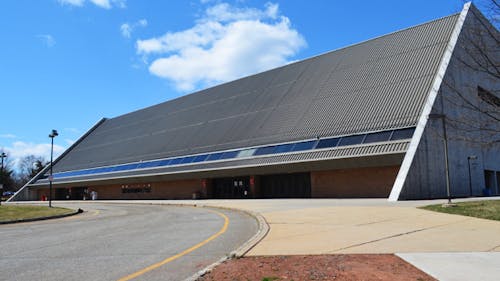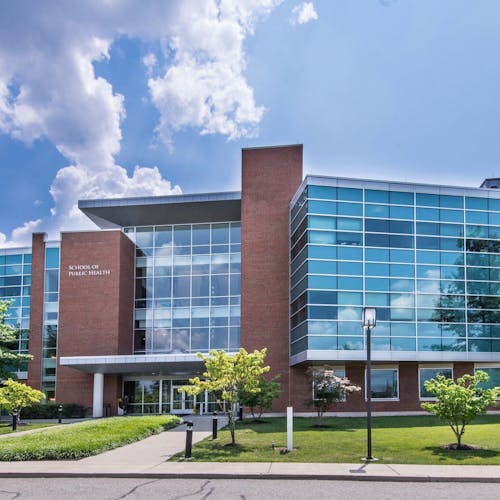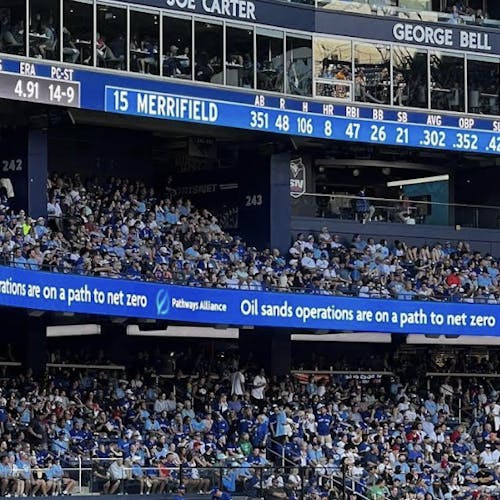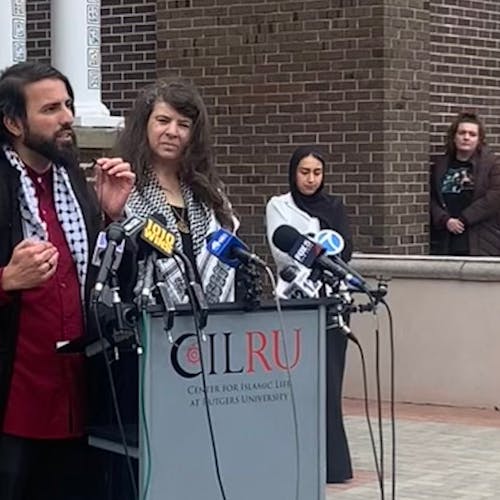Searching for a venue

Although the University’s New Brunswick campus has over 30,000 undergraduate students, no venue specially houses large-scale on-campus events. Concerts such as the upcoming Alesso concert will be hosted at the Rutgers Athletic Center. But programming is a process, and what happens behind the scenes — before, during and after events — is more complex than students may think.
History of University Programming
Before the Rutgers, Cook, Douglass and Livingston colleges reorganized into the University as it stands today, four different programming boards ran around 300 programs over the course of the year, said Tony Doody, director of programs and leadership for Student Life.
But this system of separate boards created two key problems.
“We actually realized they were competing with each other,” he said. “That was the first issue. So on any given night, there would be two or three programs from the various programming boards doing something in each of the student centers.”
The boards were also unequally funded.
“Some of the boards had quite a bit of money, in some cases 10 times as much money as some of the smaller boards,” he said. “So the range of programs that they were able to do really varied from campus to campus.”
But after the University underwent a reconstruction in 2007, Student Life consolidated the four boards into one, which is now the Rutgers University Programming Association, Doody said.
At this point, they noticed students were willing to travel to different campuses for programs, so they redirected their focus on quality instead of quantity. Student Life switched from hosting 300 programs a year to 150.
Faulty Facilities
The five multipurpose rooms in the University’s five campus centers have a maximum capacity of 500 people each, and were efficient facilities for the previous system.
But when the programming boards merged, the multipurpose rooms’ capacities posed a problem, Doody said.
“Now with a more transient population, people are getting the bus and moving. … We went from a college system to a university system, but we don’t necessarily have the facilities to accommodate the crowds of a big university population,” he said.
Student Life hosts around 10 events each year that need larger venues than the student centers. Traditionally, they use the College Avenue Gymnasium and New Jersey State Theatre for comedy shows and concerts, said Carey Loch, associate director of Student Life programs.
Comedy shows and concerts need to be popular enough to attract student attendance to cover the cost of the performer as well as the costs of production.
But both the gym and theater can only hold 1,800 to 2,000 attendees, a small fraction of the University population.
Hosting events at the State Theatre also poses problems because the University must pay for union labor instead of using student volunteers, and students must travel to its off-campus location, Loch said.
Student Life therefore needs to be creative, Doody said, when dealing with the limitations of indoor facilities.
One solution is clustering events into themes throughout the year, such as Homecoming Weekend, Family Weekend and the upcoming Geek Week, which will feature a whole series of events across different campuses geared toward the geek and nerd culture, he said.
Student Life also looks to hold events in creative locations — this year a DJ show will be held for seniors in the football team’s practice bubble, Loch said. But both Student Life and the athletic department hope to focus on using the RAC and football stadium as a venue for large-scale events.
The Rutgers Athletic Center
Opened in 1977, the Rutgers Athletic Center has a rich history as the previous home of the New Jersey Nets, host of a Grateful Dead concert and venue for an attempt to set a world record for air guitar, said Douglas Kokoskie, senior associate athletic director for facilities, events and operations.
The RAC is the location for many rainouts, including Rutgersfest and University Commencement. Even the Dance Marathon coordinators have formed a preliminary plan with the athletic department for relocating the event from the College Avenue Gym to the RAC when it reaches capacity.
But being almost 40 years old, the RAC has its limitations, such as a lack of air-conditioning, Kokoskie said. In addition, neither the men’s nor the women’s basketball team has a practice facility, and programmers need to schedule events around them.
“If both basketball teams are on the road and the date is opened, we will host something,” he said. “But we don’t want it to have a negative impact on our athletic programs.”
The athletic department hopes to fix this with a new expansion, but at the moment the University needs to raise more funds for this to happen, he said.
Programmers also need to acknowledge that the RAC was not designed to host concerts or comedy shows, Loch said.
“At the end of the day, a gym is a gym,” she said. “So you’re paying for a lot of extra costs as far as sound and lighting and in some instances air circulation and different things like that.”
The Stadium
According to a 2010 New Jersey Star-Ledger article, former Athletic Director Tim Pernetti said the athletic department hoped to attract promoters to stage moneymaking concerts and events at the renovated, 53,000 seated High Point Solutions Stadium.
“We need to do a better job in using our facilities for other events,” Pernetti said in the article. “We want to partner with an expert company.”
But when athletic department brought promoters to the University, no one showed interest in holding an event at the stadium, Kokoskie said.
“We’re willing, it just hasn’t happened yet,” he said.
Kokoskie said more promoters showed interest in the RAC because an event at the stadium needs to attract approximately 50,000 people to a one-night event. Instead, promoters can always add more dates to a show.
Geographically, the stadium is located between New York City and Philadelphia — two cities that attract large-scale concerts. Structurally, the venue can only host outdoor events, Loch said.
“We had students comment when Alesso tickets went on sale ‘this would be great to have in the stadium,’” she said. “But it’s important to note that we haven’t sold the RAC out yet for a very popular [electronic dance music] show.”
Costs
When comedian Aziz Anzari performed at the University last spring, Student Life paid $65,000 for artist fees, Loch said.
“I think people would be pretty surprised to find out how much, even what they consider just a medium level performer, would cost,” she said.
But paying the performer is only the beginning — generally hosting a concert or comedy show costs two to three times more than the artist fee.
Student Life needs to take into consideration the price of many variables, including security, ushers, custodial services and ticket scanners, Loch said.
They also need to cater to the needs of the performer, taking into account what food he or she will eat and what he or she will want on stage.
Electric Dance Music shows, like the Alesso concert, have high production costs — they use many lights, lasers and haze to create a colorful atmosphere.
Rutgersfest and Alesso
The now infamous Rutgersfest did not always have its iconic name — the event started out as Deinerfest, as it took place in Deiner Park on the College Avenue campus, Doody said. It moved from Busch to Livingston, and then back to Busch and traditionally hosted food vendors, carnival games and a series of musical events.
“Most people think it has been here since 1766, but it’s only a little bit over 20 years old,” he said. “It grew from a 2,000 person festival to a 30,000, to 50,000 person all-day festival.”
Although similar to Rutgersfest, the Alesso concert is scheduled to take place in the spring and is a large musical event, and several factors prevent the concert from getting out of hand, Loch said.
“It’s being held in the evening, it’s held in an enclosed facility and it is only open to current undergraduate New Brunswick-Piscataway Rutgers students,” she said. “Those are three huge differences that make it completely and totally different from Rutgersfest.”
Loch believes the rise of social media made Student Life lose control of Rutgersfest, but now plays an integral role in organizing the Alesso concert.
“This [gives us] ability to be able to make sure that people understand that it’s only open to Rutgers students,” she said. “We’re able to be more proactive in just putting general information out there, so people really understand what this isn’t instead of making assumptions that it’s just another Rutgersfest.”
For the past two years, Student Life has received a large amount of feedback asking to bring an EDM show to campus, she said.
RUPA worked with an agent to identify a performer the University can afford, is available and who other universities reference as providing an overall positive experience.
Alesso fell within this price range, and students were confident the show would garner a crowd.
The concert sold 2,900 tickets on the first day, around 900 to 1,000 more students than the gym can hold.
“We have roughly 1,000 students, an opportunity to have a ticket to a concert on campus that they would have been shut out from if it would have been kept at the gym,” Loch said. “It’s a good thing. It feels good.”
As of this week, RUPA sold around 3,300 tickets to the show, Loch said.
“I believe 100 percent that the show next Friday will be amazing, but it has required a large amount of money and a large amount of planning and production to be able to put a concert into a basketball arena,” she said.
A Future Venue?
As a part of the Strategic Plan, University President Robert L. Barchi has mentioned his intentions to enhance the quality of on-campus student life at town hall meetings.
But the University has no plans in the near future to incorporate an events facility as a part of the Strategic Plan, said Michelle Aronowitz, administrative assistant of University Facilities and Capital Planning.
Many other universities, including the University’s so-called aspirational peers in the Big Ten Conference, have facilities designed for shows rather than shooting baskets.
Michigan State University’s Breslin Center is home of the school’s men’s and women’s basketball teams. But it is also an arena for big-name concerts, such as Carrie Underwood, Miranda Lambert, Ne-Yo and Macklemore — all of whom have performed this spring, said Jason Cody, media communications manager at Michigan State University.
Although Loch is not completely confident the University could host an event that would draw in over 10,000 students, she likes the idea of an on-campus venue for events.
“The idea of having an indoor, quality, air-conditioned acoustically equipped [venue], with the right kind of electric resources and all of the different things that you need to do a show would be great,” she said.



